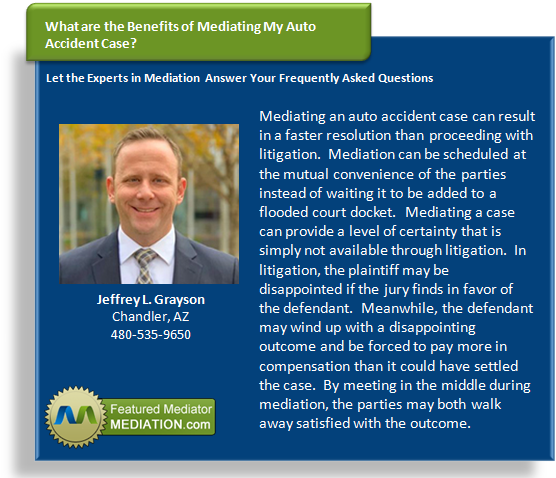Anatomy of a Bad Faith Insurance Mediation
 A bad faith insurance claim arises when an insurance company is accused of violating its contractual responsibilities with its insured. In some situations, involving a bad faith insurance claim, there may be two separate claims, one that is against the insured, such as an automotive accident claim, and the second for the bad faith assertions. These types of claims may be resolved through the process of mediation.
A bad faith insurance claim arises when an insurance company is accused of violating its contractual responsibilities with its insured. In some situations, involving a bad faith insurance claim, there may be two separate claims, one that is against the insured, such as an automotive accident claim, and the second for the bad faith assertions. These types of claims may be resolved through the process of mediation.
Types of Bad Faith Claims
A bad faith insurance claim may arise out of a variety of situations. A bad faith claim may arise if the insurance company denies or causes unnecessary delay in approving a claim. For example, it may refuse to pay under an uninsured motorist claim, homeowner’s insurance claim or other first party claim that requires direct payment to the insured.
A bad faith insurance claim may also arise in third party claims when the insurance company does not properly handle the claim. For example, it may refuse to settle a valid claim against the insured within the required time limit. It can also face this type of claim for failing to defend against a claim when it is required to provide legal counsel for the case.
Parties Involved in Mediation
There may be various parties involved in mediation. While insurance adjusters may typically be part of a routine insurance claim, they may not be involved in bad faith insurance claims. Instead, a claims representative may represent the interests of the insurance company that is exposed to potential liability. The insured is also usually present at mediation. Both parties may also have their own legal counsel.
Timing of Mediation
Mediation of a bad faith insurance claim may be commenced immediately after the act that is alleged as being the bad faith act. It may be commenced before or after litigation ensues. Mediation is a voluntary process that the parties can participate in at any time that they both agree to it.









